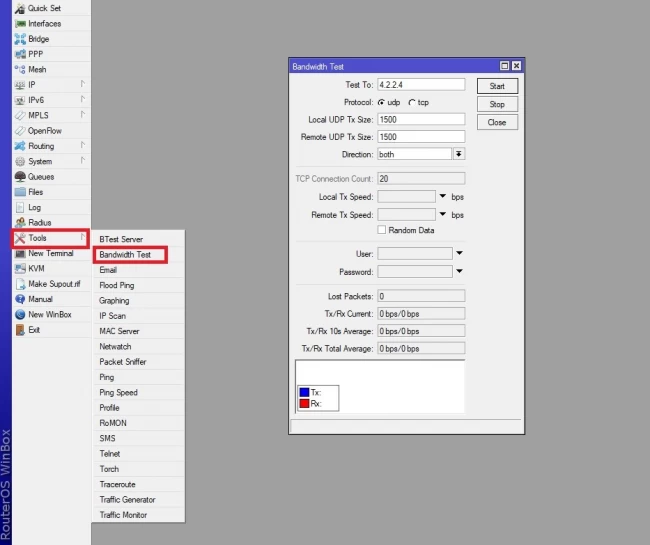List of content you will read in this article:
Your network’s bandwidth is crucial to connection speed and quality. Today we will provide you with everything you need to know about the MikroTik Bandwidth test and a small comparison between it and other network measurements such as the MikroTik speed test and latency. Following it is a short tutorial on how to perform a bandwidth test in Mikrotik RouterOS.
What is Bandwidth?
In technical terms, bandwidth is the transmission capacity of a network connection. It plays an important role in determining the quality and speed of a network or internet connection. In layman’s terms, it is the volume of data that can be transmitted at once over a connection.
Think of it as an intercity highway, where bandwidth is the number of lanes the road has. While not directly affecting the speed at which cars (data packets) can travel through it, when there is traffic, more cars will make it to the destination at the same time.
There are multiple different ways in which bandwidth could be measured: calculation of current data flow, calculation of maximum data flow, typical flow, or good flow.
In the older days of technology, bandwidth used to be measured in bps, or bits per second, however, in modern times, metric prefixes are typically attached to the front as contemporary networks have much higher bandwidth. Nowadays, we hear bandwidth being denoted in Mbps, (i.e., megabits per second), Gbps (i.e., gigabits per second), or sometimes even Tbps (i.e., terabits per second).
Bandwidth vs. Speed
Bandwidth is how much information you can receive every second, while speed is how fast that information is received or downloaded. Let's compare it to filling a bathtub. If the bathtub faucet has a wide opening, more water can flow at a faster rate than if the pipe was narrower. Think of the water as the bandwidth and the rate at which the water flows as the speed.
Bandwidth vs. Latency
Latency is sometimes referred to as delay or ping rate. It's the lag you experience while waiting for something to load. If bandwidth is the amount of information sent per second, latency is the amount of time it takes that information to get from its source to you.
Bandwidth vs. Throughput
Throughput is how much information actually gets delivered in a certain amount of time. So if bandwidth is the max amount of data, throughput is how much of that data makes it to its destination – taking latency, network speed, packet loss, and other factors into account.
What is Mikrotik?
MikroTik RouterOS is the operating system of MikroTik RouterBoard hardware. It can also be installed on a PC and will turn it into a router with all the necessary features - routing, firewall, bandwidth management, wireless access point, backhaul link, hotspot gateway, VPN server, and more.
RouterOS is a stand-alone operating system based on the Linux v2.6 kernel, and our goal here at MikroTik is to provide all these features with a quick and simple installation and an easy-to-use interface. You can try RouterOS today, go to www.mikrotik.com and download the installation CD image. The free trial provides all of the features with no limitations.
Mikrotik Bandwidth Test Tool
In MikroTik devices, you can test the bandwidth to where you are linked. To test and ensure that the bandwidth is clear and reliable, follow the steps outlined below to run the bandwidth test.
After logging to MikroTik Server, go to the tools> Bandwidth test menu. In the newly-opened window you will see some options:
- Test To: Destination IP address that you want to see the bandwidth with.
- Protocol: select the test protocol such as UDP and TCP.
- Direction: select send or receive bandwidth test
- User and pass: if the destination node has a username and password, enter the fields.

Fill out the required fields and click on Start.
Conclusion
We hope that this detailed blog helped you expand your knowledge on the Mikrotik bandwidth test, Mikrotik connection speed test, latency, and throughput. We also included a small introduction about Mikrotik RouterOS and a short tutorial on how to carry out bandwidth testing on it. If you have any questions or suggestions, please leave them in the comment section below.
People are also reading:
![MikroTik Bandwidth Test [MikroTik Speed Test]](/wp-content/uploads/2020/09/138871-main.webp)
I’m Oliver k. I have MS degree in Computer Engineering. For nearly 5 years that I have been working on web programing and also in last 2 years I have worked on windows and Linux VPS. This is my honor to share my experiences with a new community.